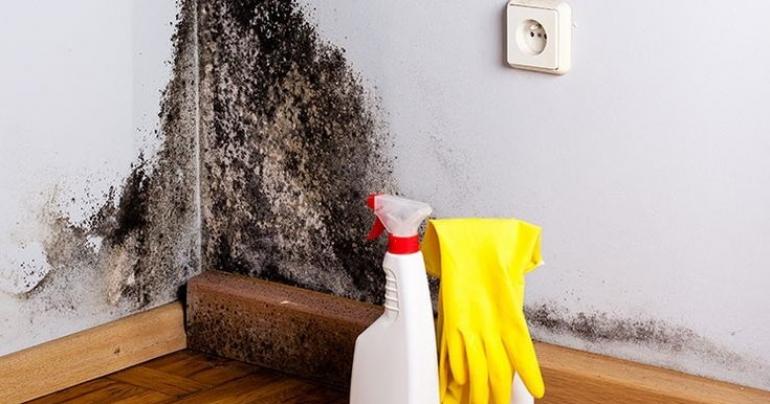Why Your Home Is More Toxic Than You Think
- 6 years ago

Your home is a safe haven from all the noxious gases and harmful particulate matter present in the air outside, right?
Well, not quite.
While there is a lot of focus on outdoor air pollution (and rightly so), the media tends to ignore the harmful effects of the pollutants lurking in your bedroom and study.
Studies show that the air inside your home can range from mildly irritating or even outright deadly.
Individuals exposed to polluted indoor air for extended periods are more prone to the risk of respiratory diseases, heart ailments, and even cancer.
That’s why the US Environmental Protection Agency has called air pollution as one of the top environmental health risks.
Causes of indoor air pollution
Tobacco smoke
tobacco smoke is an obvious air pollutant is even more harmful in enclosed spaces like your home. Smoke has been linked to lung cancer, heart disease, and developmental problems in children.
Radon You’re literally living on top of this pollutant. A naturally emitted gas, radon comes from the ground your home is built upon. It is responsible for thousands of lung cancer deaths annually.
Carbon monoxide
It is colorless, odorless – and deadly. Produced when fuels such as oil, coal, gas or wood do not burn properly, carbon monoxide can cause dizziness, headache, and nausea at low levels. Prolonged exposure has been linked to heart disease.
Perfumes, deodorizers, and fragrances
Substances used in synthetic perfumes, deodorizers, and fragrances are known to be toxic and can lead to everything from allergic reaction and birth defects to nervous system disorders and reproductive ailments.
Biological pollutants
Plant pollen, mite, fungi, pets’ hair and certain bacteria can trigger allergic diseases and other infections including fever.
Paint and VOCs
Household paints comprise volatile organic compounds (VOCs), which can trigger headaches. But even after the paint has dried, some carcinogenic VOCs such as benzene and methylene chloride can linger, putting your family’s health at risk.
Household disinfectants and cleaners
They are no doubt useful to have around but some of them interact with air to form potentially harmful VOCs. Exposure to certain sprays, for instance, has been linked to higher chances of asthma.
Dry cleaners
Many dry cleaners contain a chemical by the name of perchloroethylene, which remains on clothes and is known to cause cancer in animals.
Furniture
Formaldehyde, an organic compound, is an embalming agent and used in several household products. When released in the air, it can cause irritation in the eyes, nose, throat, and skin and even lead to breathing problems.
Wooden furniture often has formaldehyde, and it may get released into the air after a couple of years.
So what should you do about it?
One of the reasons for increased indoor pollution is the way buildings are constructed. Energy conservation is a big thing these days, and structures are built more tightly to prevent air from leaking out.
While this certainly lowers the energy wasted and helps in regulating the temperature indoors, there is also a flip side to it: the quality of air inside your home gets worse. Toxins generated inside are not able to escape easily.
Still, there are several things you can do to make your home a healthier space. Here are a few important tips to tackle indoor air pollution:
1) Remove the source of pollution
This is the simplest method of tackling pollution, but not necessarily inexpensive. For instance, if you are worried about the high radon level in your home, a radon mitigation system can bring it to acceptable levels.
Similarly, you can swap the spray or perfume you use with ones containing less harmful chemicals.
2) Don’t store paints inside your home
It’s best to store strong paints and cleaning products outside your home. Because even tiny cracks in the container can lead these substances to leak harmful VOCs into the air. So putting them in a well-covered outdoor area or a large ventilated garage is a better option.
3) Invest in a home air purifier
Nothing beats a home air purifier when it comes to securing the health of your loved ones. A home air purifier ensures that the air you breathe inside your home is free of most pollutants and toxins, and the freshest possible. The other practical methods to clean the indoor air are important, but a home air purifier gives a long-lasting and comprehensive solution to the problem of indoor air pollution.
4) Good ventilation
It’s vital that your kitchen and bathrooms are adequately ventilated as mold, smoke and bacteria can easily gather here, and these spaces can breed harmful toxins.
While cooking on a stove, make sure the exhaust fan is turned on or a nearby window is open.
The emission of nitrogen dioxide from a burning stove can easily exceed safe limits. Nitrogen dioxide adversely affects the lung lining and can trigger wheezing, flu and bronchitis.
Comments